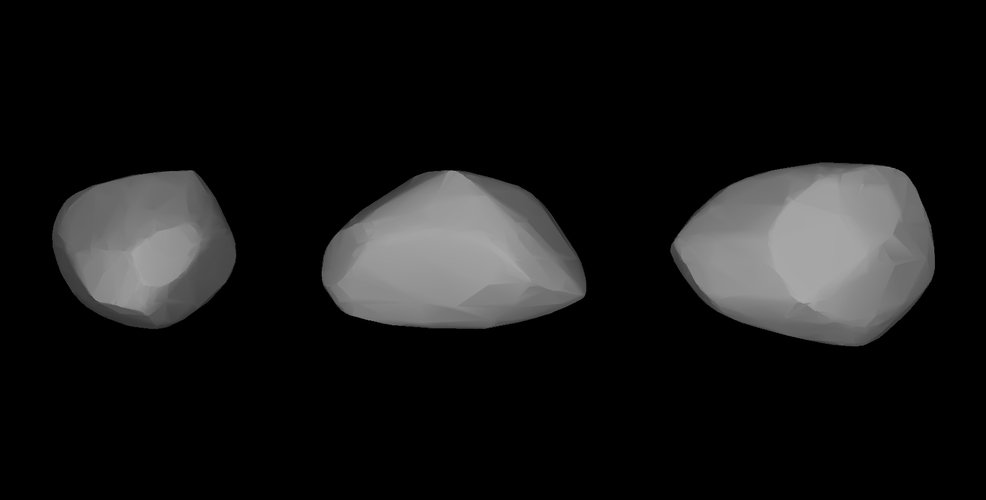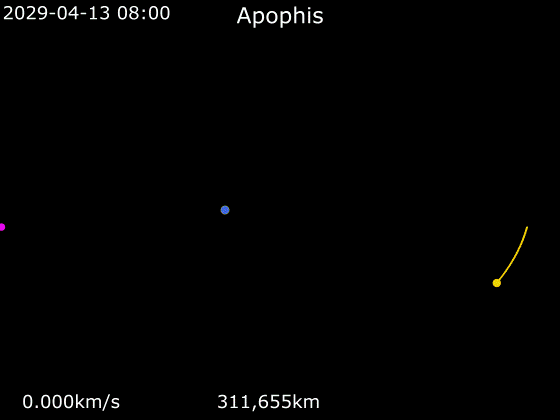
29th October 2020 Apophis asteroid may be heading for Earth in 2068 Observations of the near-Earth asteroid, Apophis, have already ruled out a collision with our planet in 2029 and 2036. However, the discovery of a new orbital characteristic suggests that a collision in the year 2068 remains a possibility.
In June 2004, astronomers at Kitt Peak National Observatory in Arizona spotted a near-Earth asteroid that became known as 99942 Apophis. This made headlines in December of that year, when observations revealed a 2.7% chance that it would hit Earth on 13th April 2029. Such an impact would have kinetic energy equivalent to 1,200 megatons of TNT – 120 times greater than that which produced Meteor Crater in Arizona and over 20 times greater than the Tsar Bomba of 1961, the most powerful nuclear weapon ever tested. A subsequent refinement of the calculations eliminated this risk. Additional observations suggested 13th April 2036 as another potential collision date. However, this too would later be discounted as a possibility. Nevertheless, its exceptionally close approach in 2029 has continued to provoke alarm and interest – since it will become the closest object of its size in recorded history, passing closer than some man-made satellites, and visible at night to the naked eye.
Now the asteroid is back in the news again. Dave Tholen, PhD, and his colleagues at the University of Hawaii's Institute for Astronomy, have announced the detection of Yarkovsky acceleration on Apophis. This arises from an extremely weak force on an object due to non-uniform thermal radiation. All asteroids must reradiate as heat the energy they absorb from sunlight in order to maintain thermal equilibrium, a process that slightly changes an asteroid's orbit. While small, these incremental changes can add up to significant shifts in trajectory over many years. In the case of Apophis, it could mean the 370 m (1,210 ft) object being nudged into a more dangerous orbit that brings it closer to Earth. A collision in the year 2068 – previously deemed low risk (1 in 150,000) – is now "a scenario that needs to be looked at again," Tholen told an online meeting of the American Astronomical Society this week. "We have known for some time that an impact with Earth is not possible during the 2029 close approach," said Tholen, who has been accurately tracking the motion of Apophis in the sky since his team discovered it in 2004. "New observations we obtained with the Subaru telescope were good enough to reveal the Yarkovsky acceleration of Apophis, and they show that the asteroid is drifting away from a purely gravitational orbit by about 170 metres per year, which is enough to keep the 2068 impact scenario in play." Further observations to refine the amplitude of the Yarkovksy effect and how it affects Apophis' orbit are now underway. Much depends on the "miss distance" in April 2029, and the precise way that Earth's gravity will alter its path. "By studying the 2029 encounter closely and critically, it will be easier to predict future impact scenarios," says Tholen.
--- Follow us: Twitter | Facebook | Instagram | YouTube
Comments »
If you enjoyed this article, please consider sharing it:
|








